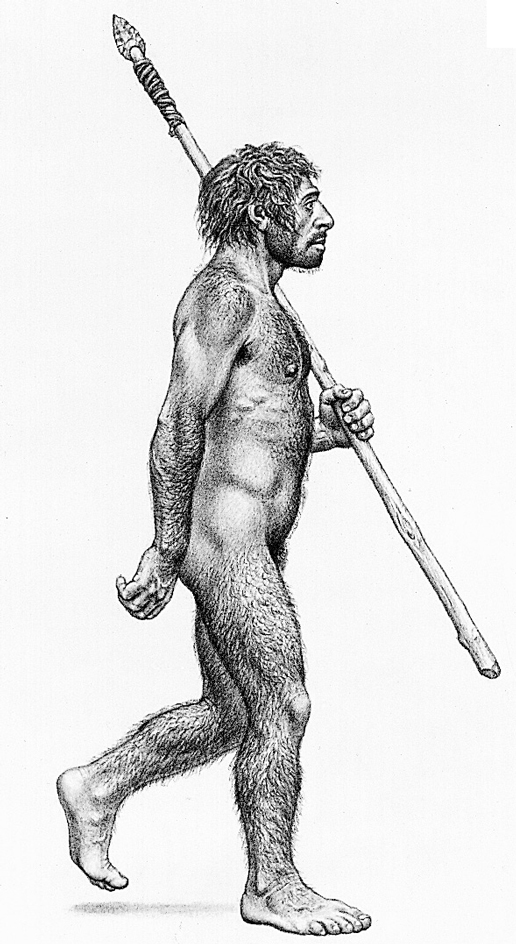Neandertals << nee AN duhr tahlz >> were prehistoric human beings who lived in Europe and central Asia. They are known mainly from fossils that date from about 150,000 to 39,000 years ago. Many scientists classify Neandertals (also spelled Neanderthals) as an early subspecies of Homo sapiens, the species of modern people. However, other scientists think they belong in a separate species, Homo neanderthalensis.

Neandertal adults stood about 5 feet 4 inches (165 centimeters) tall. They had strongly built bones and muscular bodies. Neandertal skulls were large and differed from those of modern people by having a large, projecting face; a low, sloping forehead; and a browridge, a raised strip of bone across the lower forehead. The Neandertal jaw also lacked a chin.
Neandertals lived in Europe during the Ice Age. They survived in that severe climate by using skillfully made stone tools to hunt animals and gather plant foods. Neandertals used fire and built tentlike shelters from skins, often in the entrances to caves. At least some Neandertals buried their dead with care. Some isolated populations of Neandertals may have survived until about 28,000 years ago.
As a species, Neandertals died out about 39,000 years ago, when physically modern human beings migrated into Europe. In 2010, scientists announced that they had sequenced (determined the order of) the entire Neandertal genome (complete set of genes in a cell). The scientists found evidence that Neandertals interbred with ancient populations who settled Europe, Asia, and the Pacific Islands. This finding suggests that, though Neandertals are extinct, they are part of the ancestry of some modern peoples.
